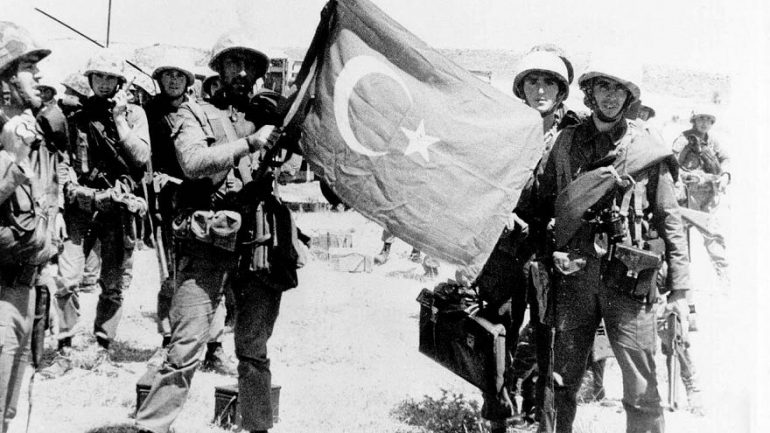05:30 in the morning. War sirens sound throughout the island.
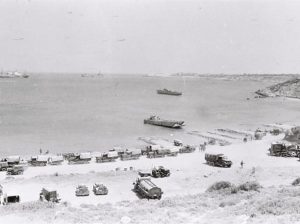

It was just five days after the coup that took place on the island and the Turkish armed forces invaded to bring peace as they said! The calendar showed July 20, 1974.
05:30 in the morning. The sirens sound again throughout Cyprus. To remind us that 44 years ago, thousands of Cypriots left their homes and thousands were killed!
44 years have already passed! For those who lived it, it looks like yesterday. It looks like a nightmare.
Since then until today, there have been dozens of talks to resolve the Cyprus issue without substantial results.
Talks, referendums, brainstorming sessions and a problem that remains unsolved.
The timeline of the invasion
The Turkish invasion of Cyprus, codenamed "Attila", began at dawn on July 20, 1974, with landing and air operations. A total of about 40.000 men took part under the command of Lieutenant General Nurettin Ersin. The Greek side was caught asleep and its reaction was delayed. Turkey claimed that it was not an invasion, but a "peaceful intervention" aimed at restoring constitutional order in Cyprus, which had been overthrown by the coup against Makarios (July 15, 1974).
Turkish landing craft began landing unhindered in the Pente Mili area, eight kilometers west of Kyrenia, shortly after 5 a.m. on July 20th. Almost at the same time, swarms of Turkish planes launched attacks, continuously and in waves against the wider area of Kyrenia and Nicosia, while other aircraft and helicopters attempted to drop paratroopers at current locations. The inhabitants were at the mercy of the invaders. Unarmed civilians were killed, women were raped and captured soldiers were executed.
The reaction of the Greek side was inexplicably belated. Although the Greek Pentagon knew the movements of the Turks, it considered that they were bluffing. Only at 8:40 in the morning was the order for the implementation of the war plans officially given by Athens, while the Greek radio (EIRT in this case), broadcast the news around 11 in the morning. The delayed mobilization enabled the Turkish invaders to consolidate their positions and build a bridgehead from the Five Miles of Kyrenia to Agios Hilarion, with the objective of connecting it to the Turkish Cypriot enclave of Nicosia.
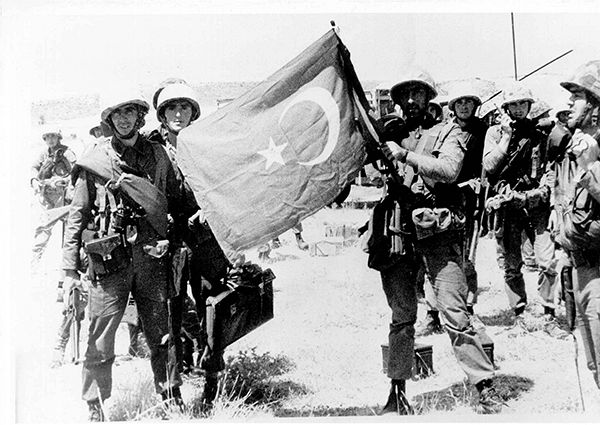
The units of the National Guard and the ELDYK, when mobilized, began to fight with heroic self-sacrifice, without even having air cover and modern weapons. They numbered around 12.000 men (Greek Cypriots and Greeks), under the command of Brigadier General Michael Georgitsis, who had the general command in the coup against Makarios.
In the meantime, the Greek Cypriot male population began to mobilize and participate in the unequal struggle with what everyone had, shooting from the roofs of their homes against the invading paratroopers.
In Athens, the government, surprised by the course of events, begins to present a picture of disintegration. He declares a general mobilization, which develops into a fiasco, showing the tragic situation of the Greek Army. And to think that Greece was ruled by the military and the Army if nothing else should be at a high operational level.
US Undersecretary of State Joseph Sisco, who is back in Athens as Kissinger's envoy, meets at the Pentagon with Armed Forces Chief of Staff General Bonano. The present Dimitrios Ioannidis in an orgy style addresses Sisco "You deceived us… We will declare war!" and leaves the meeting. Since then, the traces of the invisible dictator disappear. During the day, Cisco is in vain looking for someone to talk to.
Late at night, the UN Security Council issues Resolution 353, calling for a ceasefire and the withdrawal of "foreign troops" from Cyprus. Despite its unanimous approval, it is being ignored by Turkey, which, having the initiative of the moves, is in a hurry to fully implement its plans. In general, the international reaction against Attila is lukewarm.
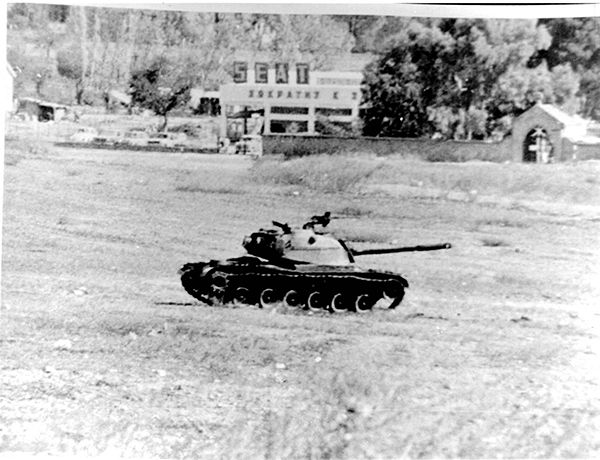
The next day, July 21, the fighting in Cyprus continues with great intensity. The goal of the Greek forces in Cyprus is to cut off the Turkish Cypriot enclave of Nicosia from the Kyrenia bridge. The Greek generals reject a proposal for intervention in Cyprus, predicting the failure of the relevant operation. Two Greek submarines sailing to Kyrenia are ordered to return to Greece.
The Turkish invaders, despite their numerical superiority and the qualitative superiority of their armaments, face significant problems. In fact, due to misunderstanding, the Turkish air force sinks the destroyer Kotsatepe (D-354), which it took for a Greek ship and causes damage to two other Turkish destroyers.
On the same day, the American factor was activated to reach a ceasefire. Cisco, coming and going between Athens and Ankara, does not find anyone in Athens to negotiate with, as all those in charge have disappeared. The commander of the Navy, Admiral Petros Arapakis, finally takes responsibility, who in a telephone conversation with Kissinger agrees that the ceasefire will take effect from 4 pm on July 22.
At 2 in the morning of July 22, 12 Greek Noratlas-type transporters, transported by commandos to the island, were accidentally hit by friendly fire near Nicosia airport, resulting in the downing of one of them (4 crew members and 27 commandos lost their lives), while two others suffered serious damage. On the same day, the Turkish invaders intensified their operations. They disembark tanks and at noon occupy the city of Kyrenia.
At 4 o'clock in the afternoon, the ceasefire is observed as agreed, but it will be violated several times by the invaders. At this point, the Turks control 3% of Cypriot territory, having created a bridgehead, connecting Kyrenia with the Turkish Cypriot enclave of Nicosia.
Shortly after 4 pm, the international agencies broadcast the regime change in Athens. The fall of the military regime and the transfer of power to exiled politicians was a fact.
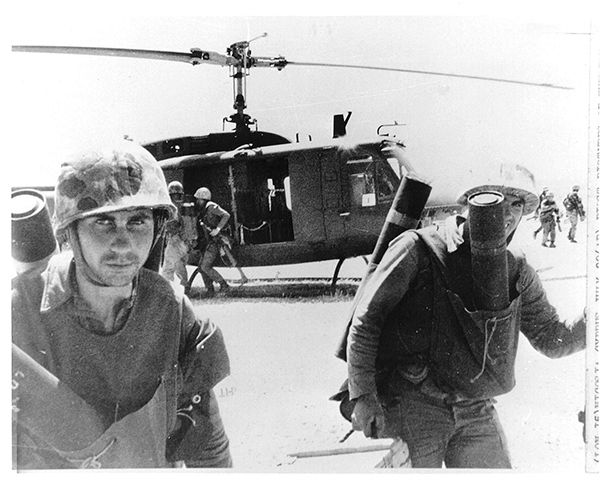
On July 24, a National Unity government was sworn in in Athens, with Konstantinos Karamanlis as prime minister. At the same time in Cyprus, the events forced Nikos Sampson to resign. Glafkos Clerides took over the presidency.
On July 25, 1974, peace talks on Cyprus began in Geneva between the Foreign Ministers of the three guarantor countries of Cypriot Independence (Mavros, Gunes, Callahan).
At the end of the talks, on 30 July, they signed a declaration, the main points of which were:
- The non-expansion of the areas under the control of the opposing forces.
- The establishment of safety belts between the adversaries
- The evacuation of the Turkish enclaves by the UN Peacekeeping Force
- The right for both sides to have their own police and security forces
- The conduct of negotiations with the participation of Greek Cypriots and Turkish Cypriots for a final settlement of the Cyprus problem.
If Turkey's intention through the invasion was what it had announced and claims so far, that is, that it was not an invasion but a "peaceful intervention" to restore the constitutional scene to the pre-coup situation, the invasion had to stop here. But the plans of the Turks were different.
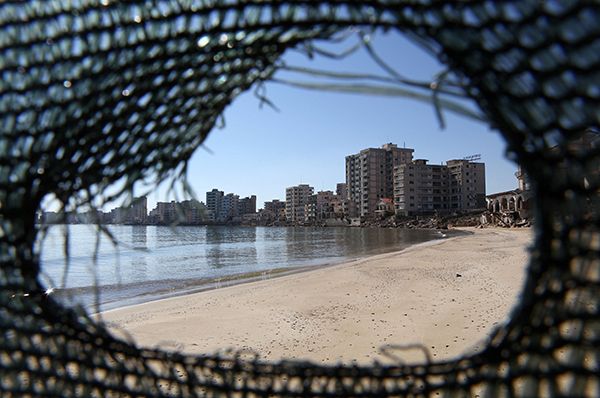
On August 14, 1974, Attila II would follow. The invasion of the city of Famagusta.
Source: Euronews.gr
